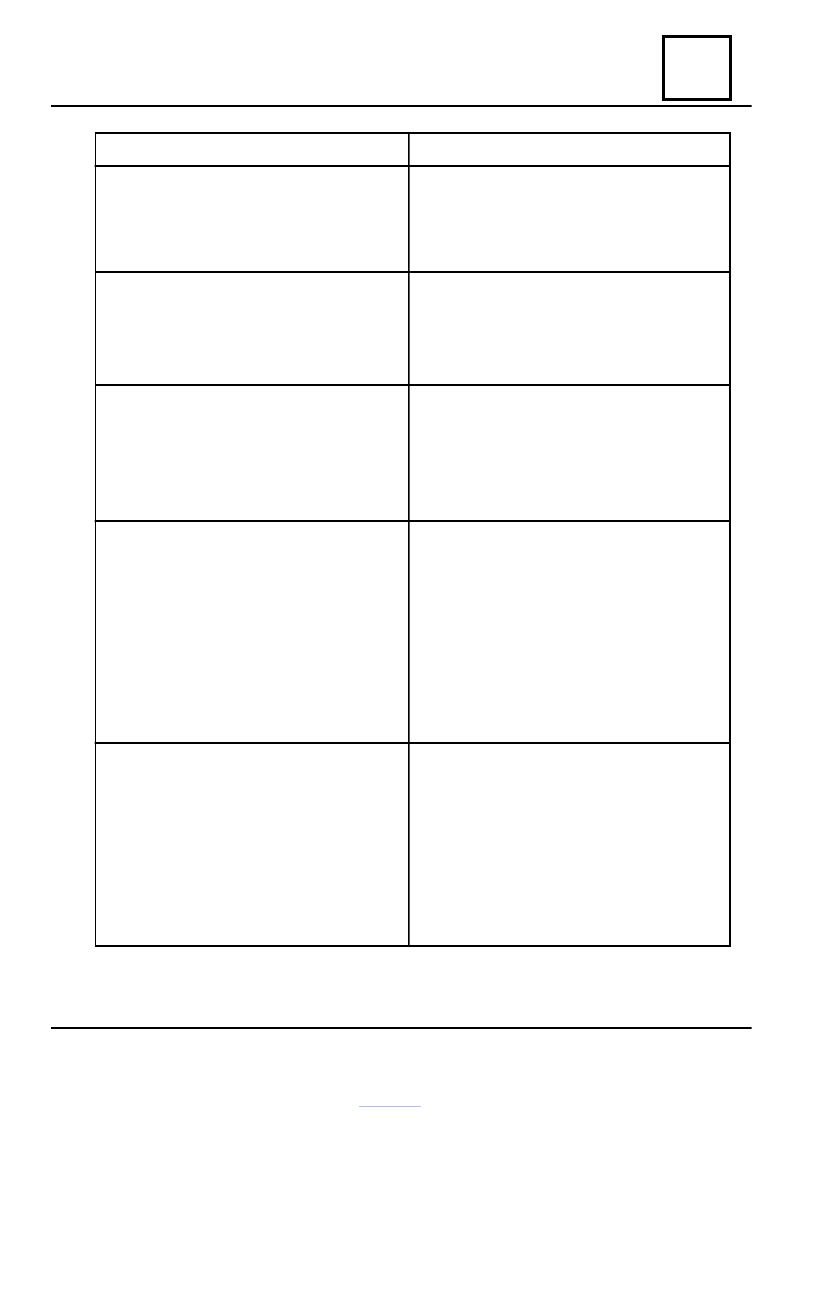Dacia Solenza (engine E7J). Manual - part 70

GENERAL
30 - 11
30
Braking system diagnostic
II.
CONSTANT EFFECT AT BEHAVIOUR
EFFECTS
Brakes not accomplishing the required
braking distance
Vibrating brakes
When braking, the vehicle ( front part)
is left/right deviating
Braking
Heating brakes
POSSIBLE CAUSES
- Non-uniform worn brake linings (backing
off);
- Brake linings slightly greased;
- Springs with modified characteristics.
- Brake disks with high wobbling;
- Inconstancy brake disks width;
- Particles abnormal deposit on brake disks
(oxidation between linings and disk).
- Front axle suspension, steering (to be
checked);
- Stuck piston;
- Tires – wear, inflation pressure;
- Rigid duct narrowed (flattening).
- Stuck piston;
Automatic adjustment : hand brake cable very
tighten.
REMARK :
Automatic recovering is performed by
means of the brake pedal, if there is no ab-
normal tension in the hand brake cable
when released (hand brake released).
- Return spring.
- Insufficient hydraulic stroke of the brake
pump, not allowing the return at rest of the
brake pump pistons ( brake pump remaining
under pressure);
- Stuck pistons or hardly returning;
- Rigid duct narrowed (flattening);
- Defective adjustment of the hand brake
control.